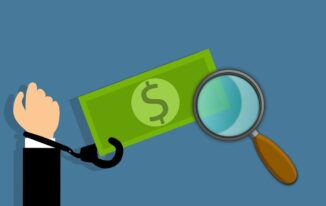Key Takeaways
- Understanding the fundamentals of bankruptcy can help in making informed financial decisions.
- Various types of bankruptcies serve different needs and situations.
- Utilizing resources and expert advice is crucial for navigating financial trouble.
Overview of Bankruptcy
Bankruptcy is often misunderstood as a dire consequence of financial mismanagement, but it can serve as a powerful strategic tool for those facing overwhelming debt. The primary goal of bankruptcy is to relieve individuals and businesses from insurmountable debts, thus providing a fresh start. While it’s a serious decision, bankruptcy can offer a structured way to protect assets and reorganize or discharge debts.

Types of Bankruptcy
The United States bankruptcy code offers several filings to address specific circumstances and debtor needs. A fundamental understanding of these can aid in selecting the most appropriate path:
- Chapter 7 Bankruptcy: Often referred to as “straight” or “liquidation” bankruptcy, this type allows individuals to discharge most unsecured debts while liquidating non-exempt assets. Chapter 7 is intended for individuals with restricted income, which complicates the ability to handle debt repayments.
- Chapter 13 Bankruptcy: Known as “wage earners” bankruptcy, Chapter 13 focuses on reorganizing debt to enable debtors to pay back creditors over three to five years. In contrast to Chapter 7, this type is appropriate for people with a steady income aiming to keep specific assets and settle debts organizationally.
- Chapter 11 Bankruptcy: Typically used by businesses, Chapter 11 allows for debt restructuring while the business remains operational. It provides a mechanism for a company to renegotiate terms with creditors and reorganize its debt obligations without ceasing business operations.
These options highlight the flexible nature of bankruptcy laws, each designed to cater to different financial scenarios. By consulting experienced bankruptcy lawyers, individuals can explore the most viable options tailored to their unique situations, ensuring that this legal process aligns with their long-term financial goals. Selecting the correct chapter is a critical decision best made with professional legal advice.
Common Bankruptcy Myths and Misconceptions
Despite its potential benefits, bankruptcy is a term riddled with stigma and misconceptions. A prevalent myth is that bankruptcy permanently destroys one’s credit score. Credit scores can be rebuilt over time with diligent financial behavior. Additionally, many fear that bankruptcy will lead to total asset forfeiture. However, various exemptions allow individuals to keep essential property, such as a primary residence or personal vehicle. By understanding these nuances, individuals can approach bankruptcy as a viable financial strategy rather than a disastrous outcome.
Steps to Take Before Filing for Bankruptcy
Filing for bankruptcy is a significant decision that should be preceded by careful consideration and preparatory steps. First and foremost, individuals should seek financial counseling to understand their economic status and explore all possible alternatives to bankruptcy. Some individuals may gain from debt consolidation, combining various debts into one loan that may offer lower interest rates and more manageable payment terms.
- Financial Counseling: Professional guidance from credit counselors can illuminate options and potential outcomes, helping individuals make informed decisions.
- Debt Consolidation: For some, merging debts into a single payment can provide relief and an opportunity to regain control over their financial situation.
By assessing these alternatives, individuals can gain a comprehensive view of their financial landscape and make more informed decisions about filing for bankruptcy.
Life After Bankruptcy
Emerging from bankruptcy symbolizes a new beginning, not an end. Post-bankruptcy life involves a commitment to rebuilding creditworthiness and financial stability. Individuals are encouraged to develop a realistic budget, prioritizing saving and responsible spending. Opening a secured credit card or taking out a small loan and repaying it on time can be initial steps toward rebuilding one’s credit score. Engaging in financial literacy programs can provide valuable education on managing personal finances and avoiding previous pitfalls. This proactive approach empowers individuals to lay a solid foundation for future economic health and success.
Resources and Assistance for Financial Recovery
Numerous resources are available for those recovering from bankruptcy, offering support and guidance on the path to financial recovery. Nonprofit organizations, governmental programs, and community-based initiatives assist with individual counseling and educational workshops. Engaging with these resources can reveal strategies for effective money management, allowing individuals to regain control over their financial destinies. Using these supports ensures a more informed and confident approach to economic recovery.
The Role of Financial Advisors in Bankruptcy
Financial advisors are pivotal in guiding individuals through bankruptcy and the subsequent recovery. These professionals offer unbiased advice, ensuring decisions align with long-term financial goals. Whether navigating complex bankruptcy proceedings or devising a plan for future financial security, advisors provide indispensable clarity and support. Exploring personal finance success stories showcases how strategic advice can lead to economic rejuvenation, offering hope and inspiration to those commencing their journey.
Conclusion: Future Financial Resilience
The road through bankruptcy is fraught with challenges but also ripe with opportunities for reinvention and growth. By comprehending its intricacies, dispelling myths, and utilizing expert guidance, individuals and businesses can emerge with newfound financial acumen and resilience. This experience fosters a proactive approach towards managing finances, ensuring a secure and prosperous future.



